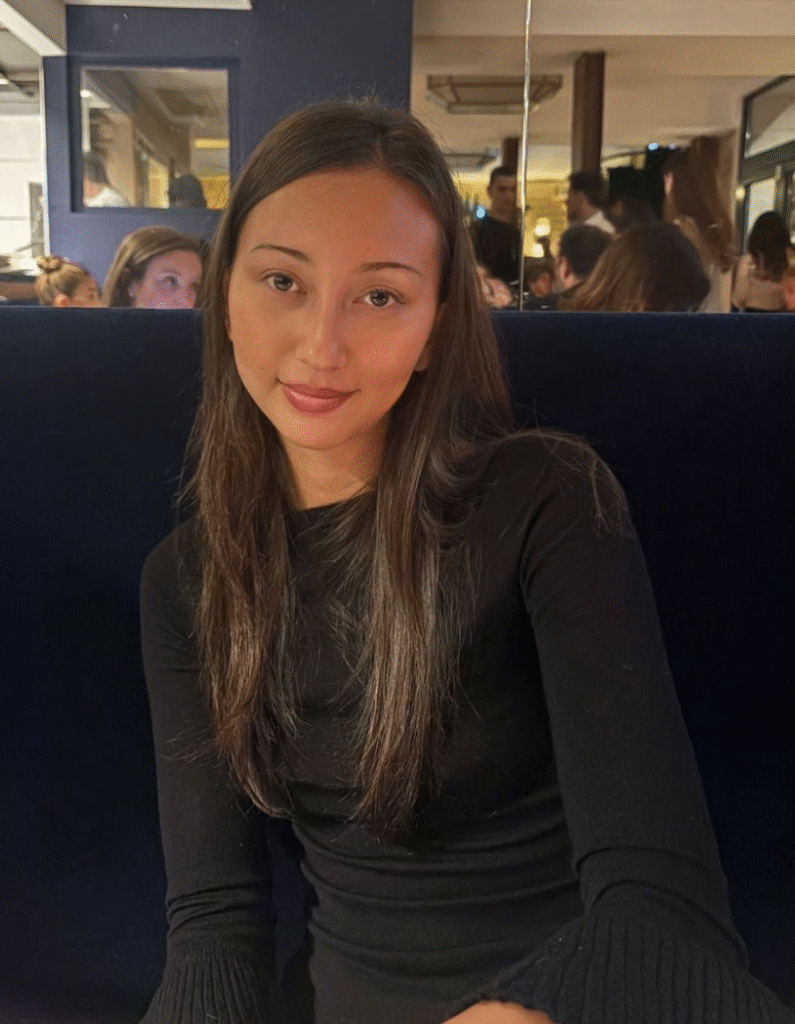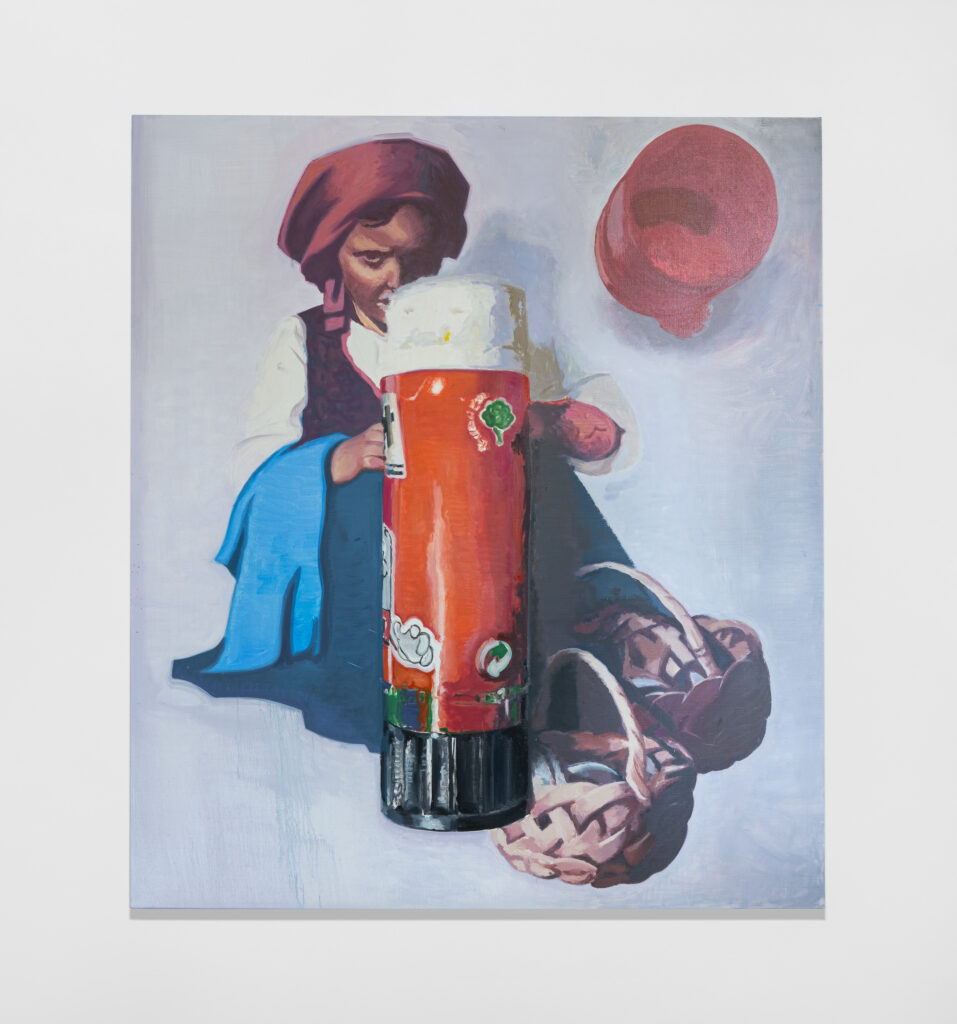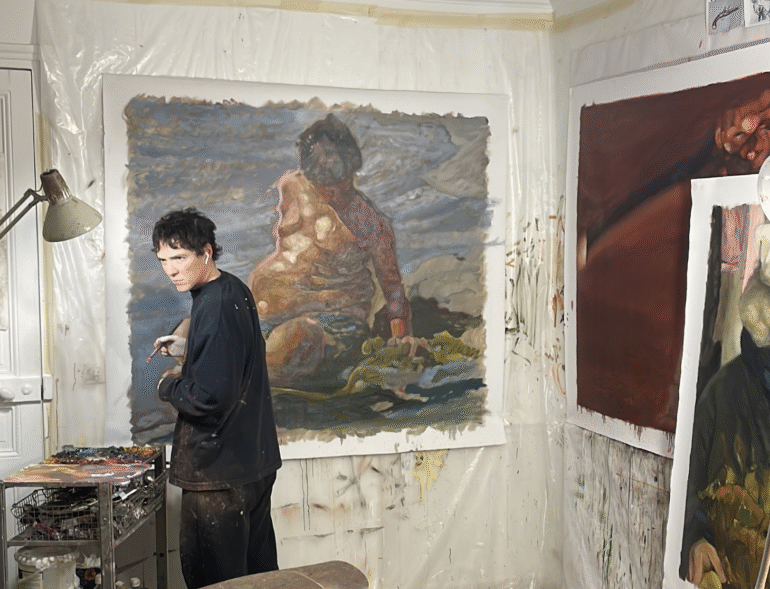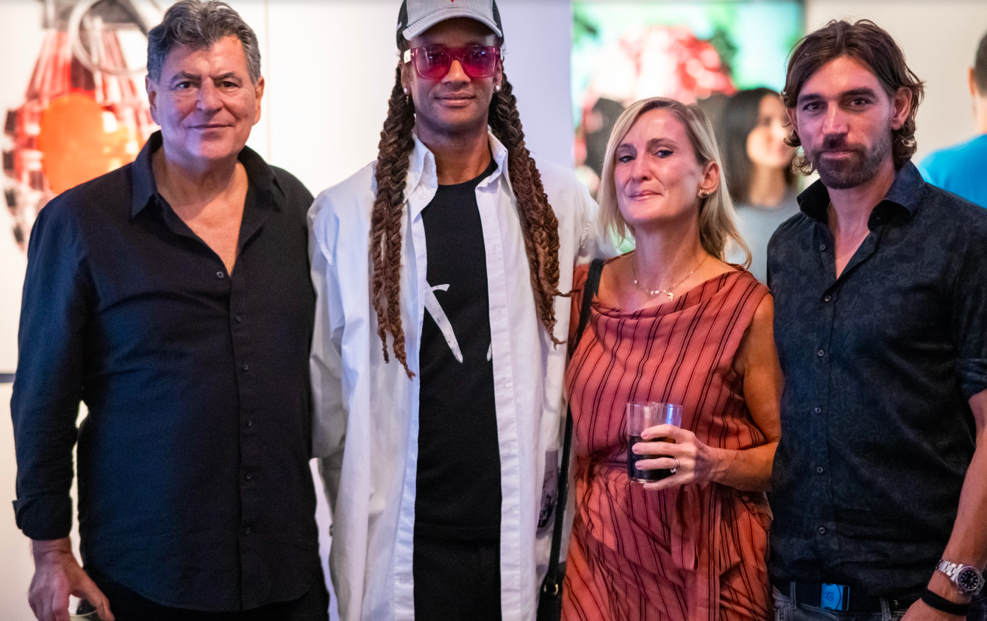As Lux Feminae makes its international art fair debut at the 11th edition of Paris Internationale (22nd–26th October) the platform presents Hold On, There–a two-person exhibition featuring new works by Italian, Paris-based artist Daniele Toneatti and New York-based multidisciplinary artist Hedi Stanton. Following their first joint presentation in Vita Dopo Vita earlier this year, this new chapter expands their dialogue around memory, transformation, and the shifting borders between perception and reality. Through painting, photography, and installation, Toneatti and Stanton explore how recollection becomes both a personal and collective terrain—where intimacy, loss, and renewal coexist. Culturalee spoke with the artists ahead of the opening about the poetics of memory, collaboration, and creating environments that hold both tenderness and flux.

Both of your practices engage deeply with the instability of memory, Daniele through the physical layering of past works, and Hedi through reimagined photographic encounters with history and intimacy. How do you each translate something as intangible as memory into material form, and where do you see your approaches converging or diverging in Hold On, There?
Hedi Stanton: The nature of making a picture is preserving the memory of that exact moment, although I find that my final picture is evocative more so of a familiar feeling rather than that moment itself. I also am interested in photographing people. I think seeing an expression – the way it’s lit or the body language accessorizing it – is inherently evocative for everyone, like we feel from scenes in movies or catching our friends’ reactions across the room at a party. Expressions are fleeting so I’ll freeze them in my portraits.

Daniele Toneatti: I think of memory in my practice mainly through time, time as a medium to make work. I’m drawn to the gaps in memory too, those blank spaces where something becomes a blur or a hole. That’s where new meanings can emerge. I like to build tension between different painterly languages, ones that feel unpredictable, improvised, almost like they’re discovering each other as they go. The visual rhythm I’m after only really happens when I take the time to build a relationship with the work, letting it evolve slowly.

You’ve described Hold On, There as an environment rather than a traditional exhibition–a shared interior that feels both personal and collective. How did the dialogue between your two bodies of work evolve during this process, and what kind of emotional or psychological space did you hope to create for viewers within Lux Feminae’s booth at Paris Internationale?
HS: We found a thread between our works that hone in on memory and specifically raw, unpolished memory. To be in a space surrounded by this theme is hopefully reminiscent and haunting for our viewers.
DT: For me, it’s important that my works connect directly with their environment and experience different contexts. They’re made as individual pieces, but they’re never really complete on their own, they need to enter into new constellations, to be in dialogue with other works and artists. I think Heidi’s photography creates an interesting tension with my own visual language, which is rooted in collage, drawing, and the handmade. This exhibition feels like a suggestion more than a statement, I’m interested in works that stay open, that feel like a work in progress. I hope the installation gives a sense of experimentation and curiosity, something still unfolding.

Both of your works deal with transformation–Daniele through the rebirth of discarded materials and Hedi through the transition from girlhood to adulthood. In an age where personal and collective identities are constantly reframed, how do you see transformation functioning as an artistic and philosophical gesture in your current practices?
HS: The more things change the more they feel the same! It’s very special to have the ability and freedom to change, but it’s always as a result of, and with respect for the past.
DT: Embracing change is really at the core of my practice. My paintings don’t follow fixed themes, they grow through visual sampling, unexpected connections, slow observation, erasure, and reaction. Transformation, for me, means taking risks, allowing surprise, and giving yourself permission to change your mind.
Hedi Stanton & Daniele Toneatti are exhibiting with Lux Feminae at the 11th edition of Paris Internationale, Rond-point des Champs-Élysées, 75008 Paris from 22nd–26th October, 2025.
For tickets visit: https://parisinternationale.com



